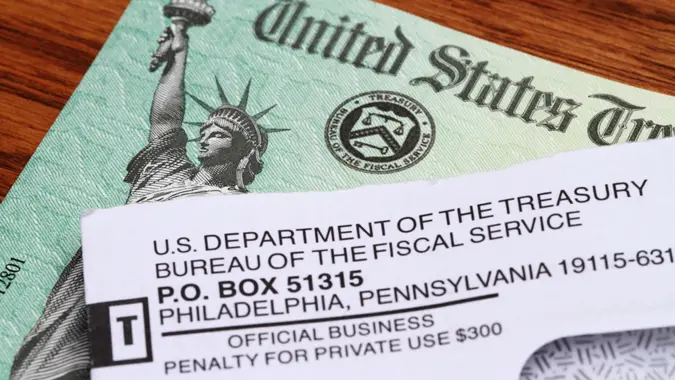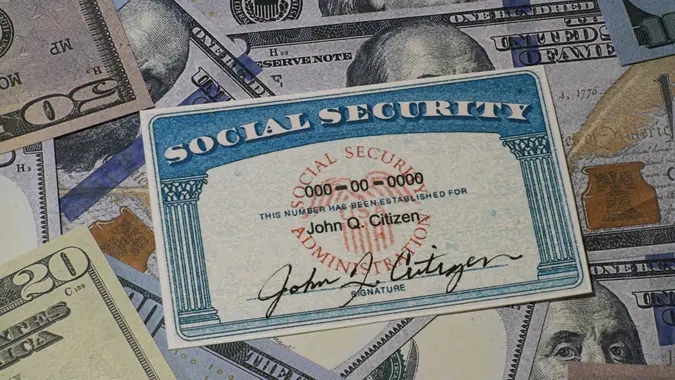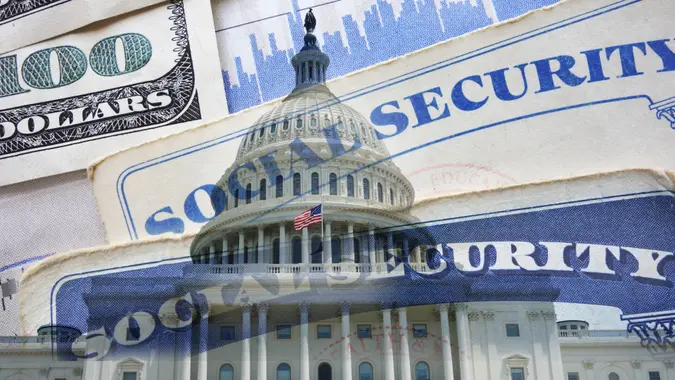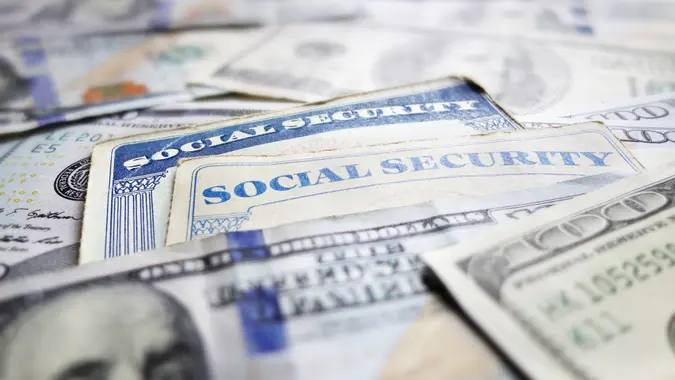Social Security Recipients Face ‘Stealth Tax’ on Benefits, Expert Warns — How COLA Plays Key Role

Commitment to Our Readers
GOBankingRates' editorial team is committed to bringing you unbiased reviews and information. We use data-driven methodologies to evaluate financial products and services - our reviews and ratings are not influenced by advertisers. You can read more about our editorial guidelines and our products and services review methodology.

20 Years
Helping You Live Richer

Reviewed
by Experts

Trusted by
Millions of Readers
Social Security recipients are seeing much bigger monthly payments in 2023 thanks to an 8.7% cost-of-living adjustment (COLA) — the biggest in more than 40 years. The average monthly check is about $146 higher than in 2022, which should help beneficiaries battle high inflation.
But there’s also a potential downside to the higher payments in that they will push some seniors into a higher tax bracket, which will erase many of the gains the COLA was supposed to deliver in the first place.
Although Social Security benefits are adjusted for inflation every year, income tax thresholds for recipients have not changed since benefits were first taxed in 1984. This means that whenever benefits are increased, more seniors are exposed to income taxes on Social Security, according to David Freitag, a financial planning consultant and Social Security expert at MassMutual.
In an interview with CNBC, he referred to it as a “stealth tax.”
As previously reported by GOBankingRates, individuals with provisionary income above $25,000 and joint filers above $32,000 have up to 50% of their Social Security income taxed. For individuals with provisionary income above $34,000 and joint filers above $44,000, up to 85% of Social Security is taxed.
Because of high COLAs in recent years — including a 5.9% adjustment in 2022 — more seniors are now subject to the 85% tax.
If the thresholds had been adjusted for inflation, the initial $25,000 threshold would now be around $73,000, according to The Senior Citizens League, a nonpartisan advocacy group. The $32,000 threshold for couples would be $93,200.
Needless to say, seniors are not happy about the tax rules governing Social Security, with some saying it discriminates against older Americans who depend on Social Security for a big chunk of their retirement income. A recent survey from The Senior Citizens League found that 58% of older taxpayers want the Social Security thresholds adjusted.
“This failure to adjust the income thresholds is negatively viewed by older taxpayers as a form of double taxation and even described as ‘ageist’ in the comments we receive,” Mary Johnson, The Senior Citizens League’s Social Security and Medicare policy analyst, said in a press release.
The survey found that 51% of respondents worry that they’ll pay more in taxes this tax season due to the 5.9% COLA they received last year. About one in five worry that they will be subject to Social Security income taxes for the first time this tax season. Those worries will only increase next year due to the 2023 COLA of 8.7%.
As The Senior Citizens League pointed out, the number of older taxpayers who pay taxes on a portion of their benefits is far higher today than the 10% Social Security officials projected in 1984.
“A lot of [seniors] would like to eliminate that tax altogether,” Johnson told CNBC.
For now, the best thing seniors can do is to plan their taxes ahead of time. As with other taxpayers, Social Security recipients can avoid a big tax bill when they file their returns by withholding more federal income taxes from their benefit payments.
“Maybe you want to up your withholding a little bit just to make sure you don’t get surprised or shocked next year,” Freitag said.
More From GOBankingRates
 Written by
Written by  Edited by
Edited by 
























